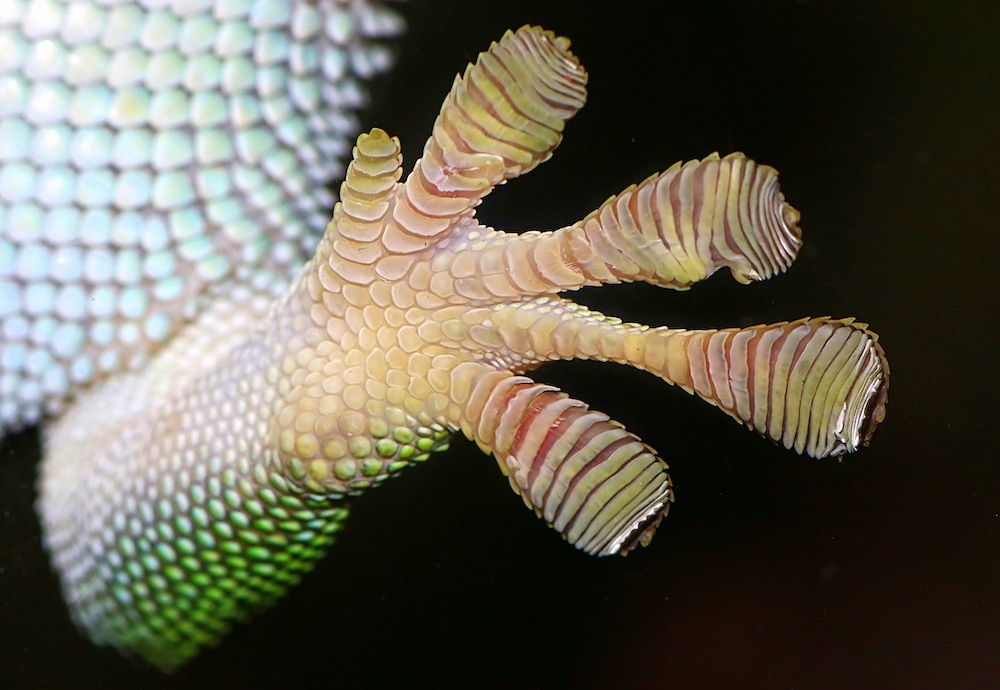Create a free profile to get unlimited access to exclusive videos, sweepstakes, and more!
Lizard fingers inspire robotic super grip for grasping tomatoes and spaceships
Someone tell Peter Parker that spiders are good at wall crawling but lizards are better.

In the realm of robotics, scientists seek to duplicate all of the things humans and animals can do as a result of evolution’s incredible engine, while also improving on those natural abilities. One challenge in robotics is developing single devices capable of operating in both realms. Many devices are either good at doing what we can do, or doing what we can’t do, but not both.
In terms of robotic manipulators there are roughly two types. There are the claw grippers of “Danger, Will Robinson” fame, and there are those which more closely resemble human hands. Each type has its benefits and limitations. In general, clawed grippers are stronger, but lack the sort of dexterity and flexibility needed to function in a variety of settings. They are very good at doing a limited number of tasks. Conversely, anthropomorphic robotics tend to be good with task flexibility, but lack the sort of strength you might want from a robot. Improving a device in one of these areas tends to sacrifice the other.
As a result, simple grippers like the mechanical claw remain the norm in most real-world settings, like manufacturing, because of their strength. If your robot needs to build a whole bunch of cars, you can settle for something which is strong but lacks finesse. However, as we move into the future, the sorts of jobs we want robots to undertake are diversifying. Likewise, their abilities need to diversify along with them. Much like a well-rounded person, the robots of the future will need both strength and tenderness.
A recent paper by Wilson Ruotolo from the Department of Mechanical Engineering at Stanford University, and colleagues, describes a new semi-anthropomorphic hand which achieves these goals. Their findings were published in the journal Science Robotics.
"It is common to see papers where a hand performs a precise pinch on a very light object and then a powerful wrap grasp around a cylindrical object and basically imply this means the hand can do many things in between. This shows a hand can be precise or strong, but to be really useful a hand must often be both precise and strong at the same time," Ruotolo told SYFY WIRE.
While in search of a design which would better simulate human dexterity, scientists looked to another animal entirely for inspiration. The team looked toward geckos, specifically the pads on their toes and fingers which let them crawl on walls with ease.
"Unlike a simpler task such as pick and place operations where forces are typically unidirectional and aligned with gravity, we seek to exert forces and torques in all six axes," Ruotolo said. "This brings a whole host of new challenges because you need higher stiffness in the fingers and structures that can handle off-axis loads."
Geckos make for good inspiration in this regard because they achieve their incredible adherence through a physical mechanism known as van der Waals forces. The forces occur at the atomic level, using changes in the charge of neighboring molecules to create attraction. The benefit, both for geckos and robots, is that these sorts of biological and mechanical designs don’t need any sticky adhesive and can adhere equally to countless surfaces regardless of the material’s charge or stickiness.
This isn’t the first time geckos have been used for inspiration in robotics. Previous machines employed gecko-inspired pads, but were limited in their design such that they were useful only for gripping flat surfaces or gently curving ones. Those sorts of machines are useful in those specific scenarios, but don’t have the wide range of functions scientists and engineers are looking for in the ultimate robotic manipulator.
The team at Stanford improved on that previous work using a four-fingered hand with a high contact area and better load sharing across finger pad patches. As a result, this bio-inspired hand is capable of grasping a variety of objects from those with flat and smooth surfaces to those with organic and uneven ones.
"Gecko-inspired adhesives with a compliant backing are a good solution because you can grasp very lightly but still pull quite hard. Any application where gentle grasps with high pulling forces are desirable will be improved by this technology," Ruotolo said.
In practice, it means this hand has the strength of more standard manufacturing manipulators like the dreaded clawed gripper, as well as the mechanical tenderness needed to handle fragile objects like eggs or fruit. The resulting device was dubbed farmHand, taking its name both from its ability to carefully manipulate soft foodstuffs like tomatoes and grapes, and from a nickname for Stanford, which is sometimes called "The Farm."
FarmHand lives in that sort of mythic middle ground of robotics, capable of a wide range of dexterous tasks while also being strong. The potential applications range from the very down to Earth, assisting in farming, to high-flying adventures in space helping astronauts to manipulate objects in microgravity.


























